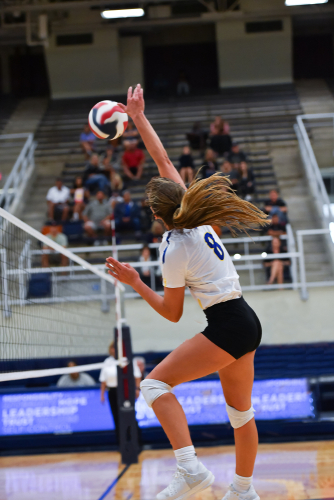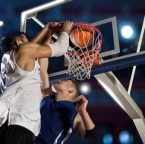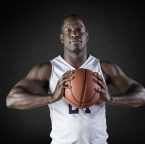If you want to play real volleyball—the kind that turns heads, earns starting spots, and wins games, you can’t just coast on talent. Athleticism matters. So does skill. But what separates the good players from the great ones is how they train.
This guide isn’t just about drills for the sake of drills. It’s built to help you jump higher, move faster, and hit harder, so you can actually dominate on the court when it counts. Let’s break it down.
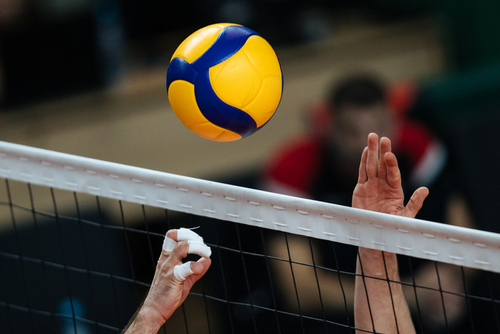
The Core Pillars of Volleyball Performance
If you want to play at a high level, you can’t just mess around and hope for the best. You need a real foundation. These five pillars are what separate the starters from the benchwarmers. Build them, and everything else gets easier.
Power
This isn’t about lifting heavy for the sake of it. It’s about turning raw strength into something useful, like blasting a spike through a double block or staying upright during a tough dig. Volleyball is more physical than people think. You need power that actually shows up when it counts.
Vertical Jump
Jumping high isn’t optional. It’s everything. Whether you’re blocking, serving, or going up for a kill, your vertical is your launchpad. If it sucks, you’re always late. Get it up.
Agility and Reaction Time
Quickness beats size in this sport more often than not. You need to move fast, change direction without thinking, and react before the ball even clears the net. Agility isn’t flashy, but it wins points.
Game-Specific Endurance
This isn’t marathon cardio. This is short, violent bursts of energy over and over and over. It’s chasing a tip, exploding for a jump, recovering, and doing it all again with zero rest. If your tank runs empty, your team suffers.
Mental Toughness
This one’s huge. You’ll get blocked. You’ll shank passes. You’ll have bad sets. What matters is how fast you reset. Mental toughness means staying focused, staying aggressive, and showing up with fire every damn point.
Essential Warm-Up Routine (Don’t Skip It)
Warming up isn’t just some checkbox before the workout. It’s the launch sequence. Skip it, and your first few plays are going to feel slow, stiff, and just plain off.
Start with light cardio to get your blood moving. Nothing crazy. A few minutes of jumping rope, jogging, or biking is all it takes. You want to break a light sweat and get your body tuned in.
Next comes dynamic stretching. Forget the old-school pose-and-hold routine, that’s for after training. Right now, you need movement. Leg swings, high knees, arm circles… stuff that opens you up and gets everything firing the way it should.
Wrap it up with movement prep drills like knee tucks, lateral bounds, and squat jacks. These mimic the exact kind of explosive work you’ll do during a match. Take them seriously, and you’ll feel quicker, sharper, and more locked in from the jump.
Jump Training for Higher Blocks and Spikes
Let’s get real here, vertical jump isn’t just another stat to brag about. In volleyball, it’s the difference between getting roofed by some random middle blocker or smashing a kill straight down their throat. You want that explosive power. No, actually, you need it. Without it, you’re basically stuck watching from the ground as other people play the game above you.
Explosive power is about more than just strength or jumping around randomly like a maniac. It’s how fast you can turn your strength into action. Think of it like lighting a fuse: the shorter the fuse, the faster the bang. You can squat or deadlift all you want, but if you’re slow, none of that strength makes it to the net. You’ve gotta train smart and fast, with specific plyo drills to get your muscles firing instantly.
Top of the list? Box jumps. Simple, effective, classic. Pick a challenging height, not some ego-driven nonsense height you barely clear with horrible form, and land soft. It’s about quickness and coordination, not Instagram likes.
Then there’s broad jumps, which are all about explosive horizontal movement, forcing your body to produce power in a different direction. Why horizontal? Because it translates perfectly to your approach jump, helping you move powerfully toward the net rather than just upwards.
But depth jumps are where the real magic happens. Step off a small box, hit the ground, then instantly explode upward onto another box or just straight into the air. It’s all about reaction speed and training your muscles to use force more efficiently. But listen, don’t go overboard. These are taxing. Keep your ego in check with depth jumps or you’ll end up fried, injured, or both.
Speaking of getting fried: you’ve gotta be smart about how often you train your vertical. Two sessions a week of focused jump training is plenty for most people. Three, tops, if you recover like an absolute champion. The key isn’t volume; it’s intensity and consistency. Destroy your legs daily and you’ll be bouncing lower instead of higher, wondering why you feel like you’re running through mud on game day.
Agility and Quickness Work
Look, volleyball isn’t just about big jumps and monster spikes, even though that’s the fun stuff. Agility, the ability to move quick, change directions without falling on your face, and react instantly, is what separates the elite from the average player. And honestly, it’s usually the difference between winning and losing points.
Start with footwork. The agility ladder is your best friend here. Yeah, I get it, some people think ladders are gimmicky. They’re wrong. Ladder drills teach your feet to move faster, improve coordination, and sharpen up your movement patterns so your brain doesn’t even have to think. Just make sure you’re not stomping around like an elephant, keep your feet light and fast.
Cone shuffles are next-level, game-like movements. Place cones a few feet apart and shuffle between them, changing directions quickly and staying low. No cheating here. None of this standing straight up garbage. The lower you stay, the better your balance and acceleration. It also builds that lateral quickness you need to defend attacks or get into position to set.
Dot drills are old-school, but they flat-out work. Imagine five dots laid out like the number five on dice, and jump between them rapidly. You’re training stability, speed, and quick foot placement, which translates directly onto the court. Because let’s face it, volleyball means moving explosively in tight spaces, and you don’t have time to think about your feet.
Reaction drills matter too. Have a teammate call out directions or toss a ball randomly. Your job is to instantly respond, adjust, and recover. Sounds simple, right? Until you realize you’re probably slower than you think. These drills sharpen your instinctive reactions. No more hesitating, freezing, or just plain guessing wrong on court.
All this agility and reaction training translates directly into better court coverage and defense. You move quicker to digs, you get into better blocking positions faster, and you respond instinctively to tips or misdirection plays. Instead of being a step behind, you’re reading plays before they fully unfold. That means you become the player your team counts on when things get tough. And honestly, nothing feels better than covering ground and shutting down opponents who thought they had an easy kill.
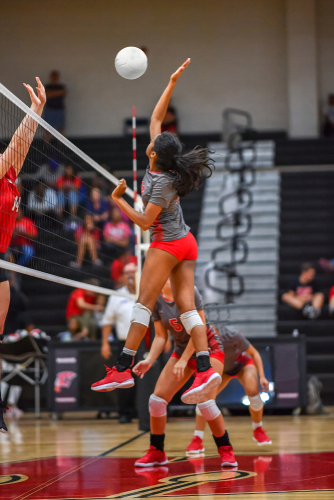
Conditioning for Game-Day Endurance
Here’s the deal: conditioning isn’t about being able to jog for an hour straight or run some endless miles like you’re training for a marathon. Volleyball doesn’t work like that. It’s explosive, fast, and brutal in short bursts. If you’re relying on generic cardio to carry you through, good luck. You’ll be gasping by the second set.
Sport-specific conditioning means training your body for what actually happens on the court. Think repeated, all-out efforts with barely enough recovery to keep your lunch down. You’re pushing hard, pulling back briefly, and then hitting it again, just like in a real match.
Suicides might feel like punishment, but they’re one of the most effective conditioning tools out there. Sprint from line to line, stop on a dime, turn, explode again. Do it right, and it’ll build both your lungs and your grit. You’ll hate them, but come game time, you’ll thank yourself when you’re still bouncing while the other team looks cooked.
Interval sprints are another killer drill. Something simple like 15 seconds all-out sprint, 45 seconds rest, and repeat. You train your body to recover quickly between those short bursts of maximum effort. Because let’s face it, volleyball isn’t a slow jog, it’s sprint, jump, dive, rest briefly, and repeat, non-stop.
And don’t skip burpee finishers. I know, burpees suck. Everyone hates burpees. But the truth is, few exercises replicate that volleyball-style intensity better. Go hard for 30 seconds, rest for 30 seconds, repeat five rounds. You’ll curse the ground you’re landing on, but when you’re still hammering spikes late in a long match, you’ll realize it was worth it.
But let’s be clear. You can’t just redline yourself every single workout and expect to keep improving. Balancing intensity with recovery is key. Go too hard, too often, and you’ll end up fried, injured, or plateaued. Mix your high-intensity conditioning sessions with smart recovery, lighter drills, stretching, or just plain resting. It’s about training smart, not just hard.
Condition yourself for the demands of volleyball specifically. Leave the steady-state stuff to runners. You’re training to dominate short, intense bursts over and over, without getting winded. Do it right, and come match day, your opponents won’t know what hit them.
Recovery and Injury Prevention
Look, recovery isn’t just some soft thing you squeeze in when you feel like it or when you’re already too beat up to train. Recovery is just as important as all the heavy lifting, explosive jumping, and sprinting you’re doing, it’s literally part of the whole package. You’re training hard, breaking your muscles down, and if you’re not actively recovering, you’re basically running yourself into the ground. And trust me, injuries suck way worse than taking the time to recover.
Stretching matters, but let’s clarify something right off the bat. Static stretching, those long holds, belongs after workouts, not before. After you train, your muscles are tight and pumped, begging for a release. That’s when static stretches help lengthen muscles back out, ease tension, and keep you mobile. Dynamic stretches, remember, go before training to wake the muscles up. Static comes after, once the work is done.
Foam rolling is another game-changer. Yeah, I get it, rolling around on the ground over a foam tube doesn’t exactly scream “tough,” but deal with it. Foam rolling improves circulation, breaks up adhesions (the knotty stuff making your legs feel like garbage), and speeds up muscle recovery. Hit your quads, hamstrings, calves, and especially your IT bands. It’ll hurt, but in a weird, good kind of way. And you’ll definitely move better the next day.
Mobility drills are a no-brainer too. You don’t want to become one of those guys who can’t even reach down to tie their own shoes. Poor mobility equals garbage performance and higher injury risk. Hip openers, shoulder rotations, ankle mobilizations, get them done consistently. You’ll move smoother, jump higher, and stay injury-free way longer. Mobility isn’t flashy, but it’s what lets you do the flashy stuff safely.
Now, let’s talk about spotting overtraining. It’s a sneaky bastard. One minute you’re feeling fine, the next you’re totally gassed, and every session feels like a chore. Watch for signs like constant fatigue, plateauing lifts, weaker jumps, crappy sleep, and irritability. Don’t just blow it off as normal toughness. Overtraining doesn’t mean you’re working hard, it means you’re working dumb.
Listen to your body. Yeah, that’s cliche as hell, but it’s true. Recovery isn’t weakness. It’s discipline, strategy, and intelligence. It keeps you on the court longer, training harder, and dominating matches instead of sitting sidelined nursing an injury. Be smart about it, your future self will thank you.
Sample Weekly Volleyball Training Plan
Monday (Strength & Power)
-
Dynamic warm-up (5-10 mins)
-
Squats: 4 sets of 6 reps
-
Deadlifts: 3 sets of 6 reps
-
Box Jumps: 3 sets of 8 reps
-
Broad Jumps: 3 sets of 5 reps
-
Core Work: Planks (3 sets x 60 sec), Russian Twists (3 x 20 reps)
-
Cool down and stretch (10 mins)
Tuesday (Skill Development)
-
Serve and serve receive practice (20 mins)
-
Hitting drills: approach and technique (20 mins)
-
Blocking footwork and timing drills (15 mins)
-
Game-simulated drills (20 mins)
-
Mobility & foam rolling (10 mins)
Wednesday (Agility & Conditioning)
-
Agility ladder: 5 drills, 3 rounds each
-
Cone Shuffles: 4 sets of 20 sec max effort
-
Dot drills: 3 sets of 60 sec
-
Interval sprints: 6 rounds of 15 sec sprint / 45 sec rest
-
Burpee finisher: 4 rounds x 30 sec on / 30 sec rest
-
Cool down and stretch (10 mins)
Thursday (Active Recovery & Mobility)
-
Light cardio (bike or jog, 15 mins easy)
-
Mobility work: Hip openers, ankle mobility, shoulder rotations (15 mins)
-
Foam rolling: Quads, hamstrings, IT bands, calves (15 mins)
-
Static stretching (10 mins)
Friday (Skill & Power)
-
Dynamic warm-up (5-10 mins)
-
Depth jumps: 3 sets of 6 reps
-
Plyo push-ups: 3 sets of 8 reps
-
Defensive reaction drills (20 mins)
-
Setting and passing accuracy drills (20 mins)
-
Cool down and stretch (10 mins)
Game Weeks Adjustments:
-
Reduce heavy lifts, keep intensity moderate
-
Emphasize recovery, shorter conditioning sessions
-
Skills practice should be sharp but not draining
-
Include extra foam rolling and mobility
Off-Season Adjustments:
-
Ramp up lifting intensity and overall volume
-
Add additional conditioning work
-
Skill sessions more focused on technique improvements
-
Consistent, structured recovery to handle increased load
Final Thoughts
Bottom line, putting in the effort now directly translates to how much you dominate on the court. Consistency matters, intensity matters, but don’t be stupid about it, smart progression beats reckless training every day. You’ve got the game plan; now it’s up to you. Quit stalling and get to work.

Wayne Mutata is a Certified USA Weightlifting Coach, Nike SPARQ Combine Trainer, and recognized supplement specialist with over a decade of professional experience. He holds a Master’s degree in Physiology and Anatomy, along with double minors in Dietary Nutrition and Exercise Science from the National Personal Training Institute of Philadelphia.
Wayne is a sought-after Strength and Conditioning expert, working with professional athletes including MMA fighters and elite Figure/Bikini competitors. His training methods are grounded in science and tailored for peak performance. Beyond coaching, Wayne has built a public profile as a fitness model and on-camera fitness personality, appearing on the cover of Fitness101 magazine and earning a nomination in the Men’s Health Ultimate Guy competition.
As the founder of Itrainwithwayne, he delivers custom workout programs, supplement protocols, and online training to clients across the United States and internationally. The Itrainwithwayne brand operates two training studios, the headquarters in Lancaster, PA, and a second location in Philadelphia, PA.

